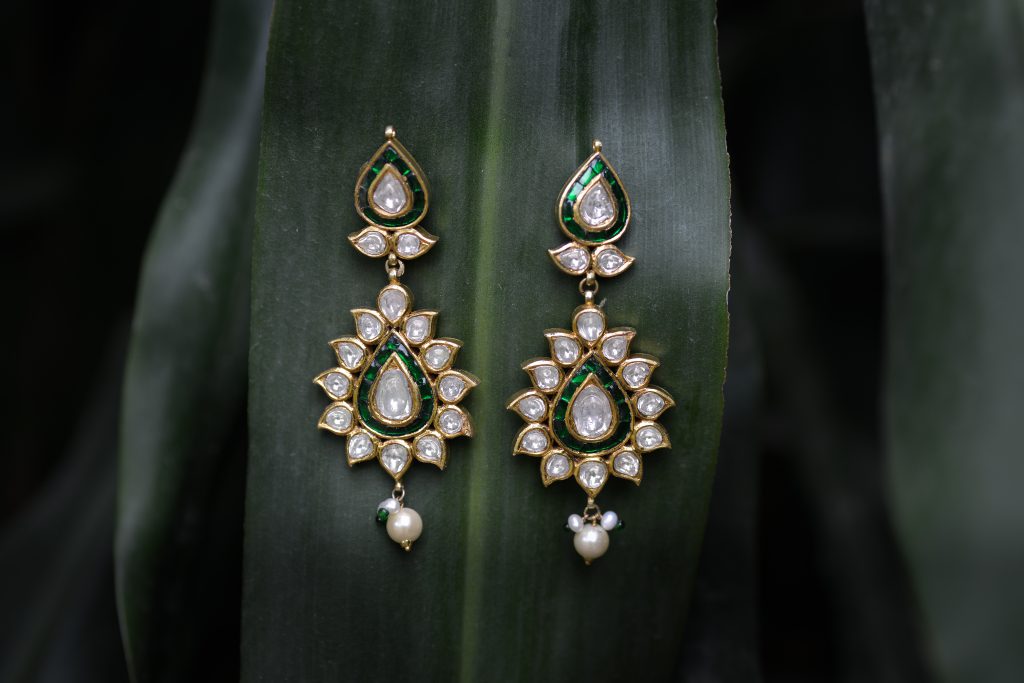
The word “antique” evokes different images for different people. Some may imagine a dusty old piece of furniture passed down from generation to generation. Others might think about a priceless painting or sculpture.
So what is the definition of an antique? What items qualify as antiques? How old for something to be considered an antique?
Read on to find out the answers to these questions.
What Qualifies as Antique?
Any item that is at least 100 years old is considered an antique. This rule, however, is not universal.
Generally, anything made before the Industrial Revolution automatically qualifies as an antique. However, some items on the market are not yet 100 years old but still qualify as antiques.
Cars and other types of vehicles are good examples. To be considered antique, these items are not required to be 100 years old. As we’ll see further in the article, special rules apply to specific items.
To determine if an item is antique, you can examine it physically or research its history. Furthermore, a professional appraiser can give you a definitive answer if you need clarification on an item’s age.
However, knowing the items’ age is not enough when it comes to value. In the following sections, we’ll share the most critical factors when determining the value of old and antique items.
What Makes Antiques Valuable?
Many factors determine whether antiques are valuable or desirable, including:
- Age
In general, antiques tend to be more valuable as they age. However, an antique’s age is only one piece of the puzzle.
- Uniqueness
A unique antique is generally more valuable than one that is more common.
- Amount of damage
Antiques are valued based on their condition, too. The value of an antique is typically higher if the item is in good condition or has been well-maintained over the years.
- Demand
An antique’s value can also be affected by its demand. A highly sought-after antique will generally have a higher value than a lesser-known one.
- Relevance in history
A historical antique or one associated with a notable historical figure is usually more valuable than one that isn’t.
- Authenticity
A provenance or documentation showing the history of the antique can make it more valuable than an item without one.
The Most Common Antique Items
Since special rules apply to different antique pieces, let’s briefly examine what to look for in each item depending on its type.
Furniture
There are a few methods for identifying what furniture qualifies as an antique. However, an antique dealer can make the process easier if you’re inexperienced.
Here’s what to look for:
- Joinery
Dovetails that are uneven are more likely to be antiques since they were probably done by hand.
- Symmetry
If a piece is symmetrical, chances are it’s machine-made and is, therefore, not antique.
- Finish
An old piece may be painted with oil, wax, or milk. On the other hand, modern furniture usually has a semi-gloss paint finish.
- Wood
It’s sometimes possible to identify antiques by the type of wood from which they are made. For example, oak wood was the most common material used in old furniture.
Dolls
Following the 100-year rule, dolls made before the 1920s would be considered antiques on the collector’s market, but their values range widely. Artisans used many materials to make these dolls, including wood, wax, porcelain, and bisque.
Let’s see how to identify antique dolls.
- Chinese porcelain dolls
Most Chinese porcelain dolls that are considered antiques were made with wood bodies and porcelain heads.
- Bisque dolls
A bisque doll’s body was typically made of leather or cloth, and its head was made of bisque with molded eyes, ears, and mouths.
- Parian dolls
Similar to Chinese dolls, a Parian doll has a fabric body and a porcelain head. However, the head is not glazed before firing, so it has a matte finish, just like bisque dolls, giving it an appearance that’s distinct from Chinese dolls.
- Baby (bébé) dolls
A doll resembling a child was first made in the early 1900s, instead of the traditional dolls (made before the 1900s) that were almost always adults. Therefore, dolls resembling adults are more likely to be antiques.
Cars

Cars are one of the exceptions to the rule that the item must be 100 years old or older to be considered an antique.
The Antique Automobile Club of America considers any car over 25 years an antique. Some dealers, however, believe that only vehicles over 45 years old should qualify as antiques, so opinions are divided on this one.
The original condition of cars or the state of their restoration determines their value. Because they’re usually preserved, protected, or displayed at car shows, antique cars are rarely driven.
Boats
Boats built between 1919 and 1942 are considered antiques. Most of these boats are made of wood, although some have also been made of fiberglass.
Motorcycles
By the standards of the Antique Motorcycle Club of America, a motorcycle must be at least 35 years old to be considered antique.
Trucks
According to the Antique Truck Club of America, an antique truck is one that has been around for at least 45 years.
Antique trucks are typically simpler in design and smaller in size than modern ones. As with cars, antique trucks are usually bought for display and rarely driven.
Tractors
Tractors manufactured in 1960 or earlier are considered antiques.
Several antique tractor organizations around the United States use the “1960” rule to categorize old agricultural machinery, which is regarded as the industry’s most accurate ‘rule of thumb.’
Milk Cans

A can made before 1950 qualifies as an antique. This is because milk cans made in the past had thicker metal. Additionally, older cans usually had three pieces of metal welded together instead of one solid piece.
Finally, older cans had thick paper labels instead of thin stickers.
Silver
A piece must be at least 100 years old to be considered antique silver. Silver antique items typically date back to the 19th or early 20th century.
Traditionally, antique silver items are stored in specific cases to protect them from damage.
Glass

Antique glass collections may include cups, plates, vases, and bowls. It’s estimated that ancient cut glassware dates back about 2000 years.
The pinnacle of glassmaking was the glassware between the late 19th and mid-20th centuries. Therefore, glassware from this period would probably be considered a highly-valuable antique.
Vase
In the case of vases, the rule of 100 years applies. Therefore, any vase older than 100 years is considered an antique.
Most antique vases were made with wood-powered kilns, often resulting in irregularities like asymmetry, patchwork lusters, and seam marks. Clay vases often had a name and date etched into them. And the bottom, porcelain vases usually had the maker’s mark.
Jewelry

Antique jewelry often features higher-quality materials and better craftsmanship than modern jewelry.
Some of the most popular eras for antique jewelry include:
- The Edwardian Era (between 1871 and 1914)
- The Georgian Era (between 1714 and 1837)
- The Art Nouveau Era (between 1890 and 1910)
Brass
Many antique brass pieces date back to the mid-18th century when Birmingham was an influential metalworking center.
You can identify antique brass by the following features:
- No magnetism
- Undertones of gold
- Age-related, use-related, or production-related imperfections
- Quite heavy
- Feels vintage
Sewing Machine

Sewing machines from the mid to late 1800s are historically significant (as one of the first home appliances during the American Industrial Revolution, influencing women’s roles). In addition, considering how rare they are, a sewing machine from this period is extremely valuable.
You can determine how old a machine is based on its serial number and the corresponding date. The quality of a model is another crucial factor determining its value.
Cash Register
Cash registers from the early 20th century had circular and stepped keys, similar to the keys on a typewriter. As a result, they are usually heavier than modern cash registers.
Unique designs were typically added on the sides and back of antique rectangular cash registers.
Therefore, if you have a cash register from the early 20th century with a unique design, you’re likely an owner of an antique.
Wash Stand
The first forms of washstands date back to the 16th century, with most traditional washstands made throughout the 18th and 19th centuries. From the 1930s and 1940s, modern ones took the spotlight.
Old washstands consist of small tables or cabinets, typically supported by three or four legs. As an early form of a bathroom sink, the washstand served as a place to wash.
Most commonly, antique pieces were made of mahogany, walnut, or rosewood.
Gun
Guns made before 1898, with a matchlock, flintlock, percussion cap, or similar ignition system, are considered antiques.
Ice Box
Before the development of safely powered refrigeration devices, iceboxes were a common early-20th-century kitchen appliance.
Like most items on this list, the ice box must be 100 years old or more to qualify as an antique.
Watering Can
Watering cans in the late 1600s were made of copper. After that, brass and zinc versions replaced them in the mid-1800s.
Antique French watering cans of yore had elegant handles and looked like large pitchers. A typical American watering can is larger and bulkier.
Conclusion
Generally, antiques are items that are at least 100 years old. However, the age limit for antiques depends on the type of the item and its intended use.
You can determine an antique’s age by studying its physical characteristics, researching its historical records, or contacting an appraiser.
Regardless of how you define antiques, they can add a touch of history and elegance to your home.

Leave a Reply